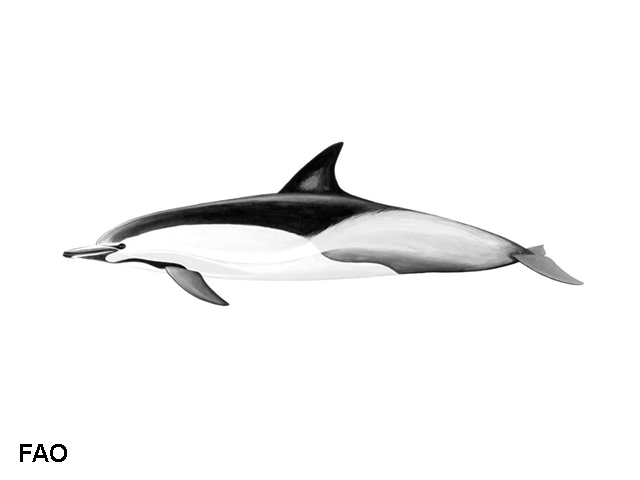| Delphinidae (marine or true dolphins) |
| 260 cm TL (male/unsexed); 230 cm TL (female); max.weight: 135 kg |
|
pelagic-oceanic; marine; depth range 0 - 8000 m, oceanodromous |
| Indo-Pacific, Atlantic Ocean and Mediterranean and Black Sea. Warm temperate and tropical waters. It is not reported in Antarctic territories (Ref. 128552) [Mediterranean population: IUCN 2010 (Ref. 84930): EN, A2abc.] |
|
|
| Found in tropical coastal waters (Ref. 1522). Inhabits neritic waters over continental shelves (Ref. 80684). Usually found offshore. Commonly in large herds of 30 or more individuals (Ref. 801). Feeds on small schooling fish and squid; at night on creatures associated with the deep scattering layer (DSL), which migrates towards the surface in the dark (Ref. 1394). Preyed upon by great white sharks (Ref. 8891). Delphinus capensis tropicalis: They were reported to bow ride although not in areas particularly where hunting occurs. Schools in offshore areas are somewhat larger than coastal ones. Some form mixed schools with spinner dolphins (Stenella longirostris), and remains on the outskirts of the spinner school generally. Sexual maturity probably occurs at 200 cm. It is associated with Sardinella sp., various tunas, stomach nematodes, cirriped barnacles, and the isopod Cirolana parva (Ref. 79556). |
|
(LC); Date assessed: 20 October 2020 Ref. 123251)
|
|
|
Source and more info: www.sealifebase.org. For personal, classroom, and other internal use only. Not for publication.

